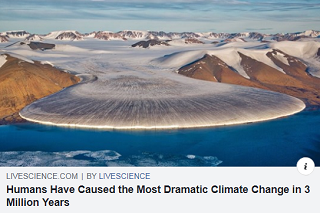Paleoclimatology

I can see that you’re being snide, suggesting that scientists are simply inventing data to prove whatever they want. But I want to answer it anyway, insofar as readers may be interested in the subject. The short answer is a discipline known as paleoclimatology, where scientists, (quoting the National Centers for Environmental Information):
….look for clues in Earth’s natural environmental records. Clues about the past climate are buried in sediments at the bottom of the oceans, locked away in coral reefs, frozen in glaciers and ice caps, and preserved in the rings of trees. Each of these natural recorders provides scientists with information about temperature, precipitation, and more. Many of these have some type of layers, bands, or rings that represent a fixed amount of time, often a year or growing season. The layers vary in thickness, color, chemical composition, and more, which allows scientists to extrapolate information about the climate at the time each layer formed.
Scientists can then take the records left by many different types of natural records and combine them to get an overall picture of the global climate. Typically, records that have large timespans have less detail about short-term climate changes, while shorter records are often more detailed. To combine them, scientists must use records with similar levels of temporal detail or account for these disparities to accurately paint a picture of ancient climates.
Though we’re learning more about this subject with each passing year, we have an astonishingly good understanding of what our planet was like, going far back into its 4.5 billion year history.
